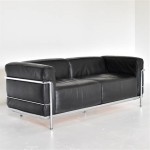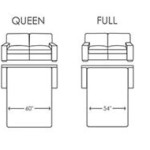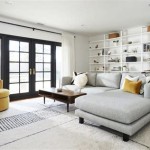Sofa Tables Between Sofa and Wall: A Guide to Functionality and Style
A sofa table, also known as a console table, positioned between a sofa and a wall serves both functional and aesthetic purposes. It provides a surface for lamps, decorative objects, and other necessities, while also bridging the visual gap between the sofa and the wall. This article explores the various aspects of choosing and utilizing a sofa table effectively in a living space.
Dimensions and Proportions: Selecting appropriate dimensions is critical for a harmonious look. The table's height should ideally be close to the sofa's back height, typically around 28-32 inches. The length should be around two-thirds to three-quarters the length of the sofa, preventing an overwhelming or underwhelming appearance. Depth should be considered based on the available space behind the sofa and the intended use of the table; a depth of 12-18 inches is common.
Material and Style Considerations: Sofa tables are available in a variety of materials, each contributing a different aesthetic. Wood, metal, glass, and even stone can be used. Wood offers a classic and versatile option, ranging from rustic to refined styles. Metal introduces a modern or industrial touch, while glass creates an airy and contemporary feel. Stone adds a touch of elegance and sophistication. The choice of material should complement the existing furniture and overall design scheme of the room.
Functionality and Storage: Beyond aesthetics, a sofa table contributes significantly to a room's functionality. The surface provides a convenient place for lamps, reducing glare on television screens and providing ambient lighting. It can also hold decorative items such as vases, picture frames, or sculptures, enhancing the room's visual appeal. Some sofa tables incorporate drawers or shelves, offering valuable storage space for remote controls, books, or other small items, contributing to a clutter-free environment.
Styling and Decoration: A sofa table offers a platform for showcasing personal style and creating visual interest. The arrangement of objects on the table should be balanced and purposeful. A combination of height and texture can create a dynamic display. For instance, a tall lamp paired with a stack of books and a small decorative bowl provides visual variety. Layering different textures, such as a woven basket with a smooth ceramic vase, adds depth and complexity.
Lighting Options with Sofa Tables: The incorporation of lamps on a sofa table is a crucial aspect of its functionality. Table lamps provide targeted light for reading or other activities while adding to the overall ambiance of the room. The lampshades should be chosen to complement the room's style and direct light appropriately. Consider the height of the lamp in relation to the seating area to prevent glare and ensure adequate illumination.
Coordinating with Existing Decor: The sofa table should seamlessly integrate with the existing furniture and decor. Consider the style, color, and materials of the sofa, coffee table, and other surrounding pieces. If the room has a minimalist aesthetic, a sleek and simple sofa table would be appropriate. In a more traditional setting, a wood table with ornate details might be a better fit. The goal is to create a cohesive and harmonious look throughout the space.
Space Optimization with Narrow Sofa Tables: In smaller living spaces, a narrow sofa table proves invaluable. These tables provide functionality without overwhelming the room. They offer a surface for lamps and decorative items while maintaining a sense of spaciousness. A narrow profile is particularly beneficial in apartments or rooms with limited walkway space.
Alternative Uses for Sofa Tables: While traditionally placed behind a sofa, a sofa table can be utilized in other areas of the home. It can serve as an entryway table, providing a landing spot for keys and mail. It can also be used in a hallway to display artwork or family photos. The versatility of a sofa table makes it a valuable piece of furniture for various settings.
Maintenance and Care: Proper maintenance ensures the longevity of a sofa table. Dust regularly with a soft cloth and avoid placing hot or wet items directly on the surface. Use coasters and placemats to protect the finish from damage. Wood tables may require occasional polishing or waxing to maintain their luster. Follow manufacturer guidelines for specific care instructions based on the material of the table.
Budget Considerations: Sofa tables are available at a wide range of price points. Factors influencing the cost include the material, size, and design. Consider the budget and prioritize features based on individual needs and preferences. A simple and functional table can be quite affordable, while more elaborate designs with intricate details may command a higher price.
Choosing the Right Sofa Table: Selecting the ideal sofa table involves careful consideration of various factors. Assess the available space, the style of the existing decor, and the desired functionality. By considering these elements, one can choose a sofa table that enhances both the aesthetics and practicality of the living space.
Interiors I Love Console Tables Behind Sofas K Sarah Designs

How To Build A Rustic Sofa Table Worthing Court Diy Home Decor Made Easy
Interiors I Love Console Tables Behind Sofas K Sarah Designs

15 Stylish Ways To Make The Most Of Behind Sofa Table

Make It Diy Sofa Table With S Home Decor

Ideas For That Empty Wall Behind The Sofa Kelly Bernier Designs

Easy Diy Sofa Table Tutorial Christina Maria Blog

Easy Diy Sofa Table Tutorial Christina Maria Blog
Interiors I Love Console Tables Behind Sofas K Sarah Designs

30 Diy Sofa Console Table Tutorial Home Living Room








